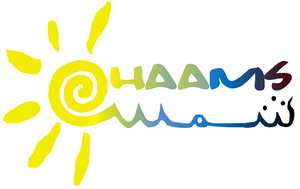Introduction
We propose an inter-disciplinary project with two main objectives:
(1) to advance our understanding of the trajectories of water resources on the basis of a systemic approach of the eco-hydrological functioning of agro-systems taking into account socio-economic factors and governance issues.
(2) to propose several innovative solutions to rationalize the use of agricultural water in the region.
The issue of water resources management and the associated hydrological cycle is addressed according to the duality of consumption (infiltration and storage in the root zone) and production (percolation to aquifers and runoff to artificial reservoirs), considering the interactions between upstream areas and downstream areas. The targeted scales of action are the scales of decision-making: (1) the plot for the farmer irrigation planning on a day-to-day basis, (2) the watershed for the manager planning the catchment development, and (3) the national territory for the state that defines public policies.
Because of the large range of situations of Mediterranean agrosystems, we choose to conduct a comparative analysis of representative and well-documented cases. Four pilot sites are selected in Tunisia (Lebna, Merguellil), Morocco (Tensift), Lebanon (Litani). Merguellil has an important rainfed agriculture sensitive to climate changes. Tensift and Litani have a snow-dominated flow regime. In Tensift and Merguellil cases, the upstream rivers feed a dry plain or a coastal where irrigation rapidly expands (Merguellil) or already dominates (Tensift). In Litani and Lebna sites, the problem of water quality becomes essential for water management. Water governance illustrates numerous complementarities between the four sites due to environmental context, water uses, sector competitions and current water policies. All these aspects have also to be considered in the context of political breakings (as green plan for Moroccan agriculture, revolution in Tunisia, crisis of refugees in Lebanon). A detailed description of differences and complementarities is provided at appendix 3.
Each site benefits from many previous studies that developed socio-environmental field surveys, information systems about agricultural practices and hydrology, biophysical and socio-economical models, and strong interactions with various levels of stakeholders. The strength of Chaams is also to rely on long-term perennial structures, namely two international joint laboratories of the French Research Institute for Development (TREMA, NAÏLA), an associated international laboratory of the CNRS (O-LIFE) and four observation systems, three of which are involved into national and/or international networks (JECAM, OMERE, O-LIFE). These structures are an essential tool to facilitate the consortium network functioning.
